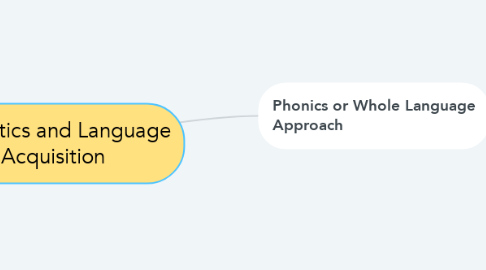
1. Phonics or Whole Language Approach
1.1. Phonics is sequential, prescriptive
1.2. Whole Language approaches are more subjective. Students can make mistakes without being reprimanded.
1.3. Brooks (2001), questions both approaches.
1.3.1. They lay a bad foundation for students: formulaic and inaccurate.
1.3.2. Brooks (2001) is a semanticist
1.3.2.1. He supports Korzybskian's general semantics and their 3 principles.
1.3.2.1.1. Principle 1: The principle of non-allness: One can never represent everything about anything.
1.3.2.1.2. Principle 2: The principle of Non-Identity: "Students and teachers pay more attention to oversimplifications than confer potentially erroneous qualities on an object or abstraction" (Brooks, 2001, p.395). For example, grass is not always green.
1.3.2.1.3. Principle 3: The principle of self-reflexiveness. Reacting to one's reaction...
1.3.2.1.4. By incorporating these principles into language acquisition strategies, the teacher facilitates an attitude toward reading and writing that emphasizes reflection and careful consideration of meaning rather than rote memorization or absolution from conveyed meaning (Brooks, 2001, p.395).
1.3.2.1.5. Continuous reflection and examination of one's own language will result in more meaningful and accurate communication
1.3.2.1.6. "

